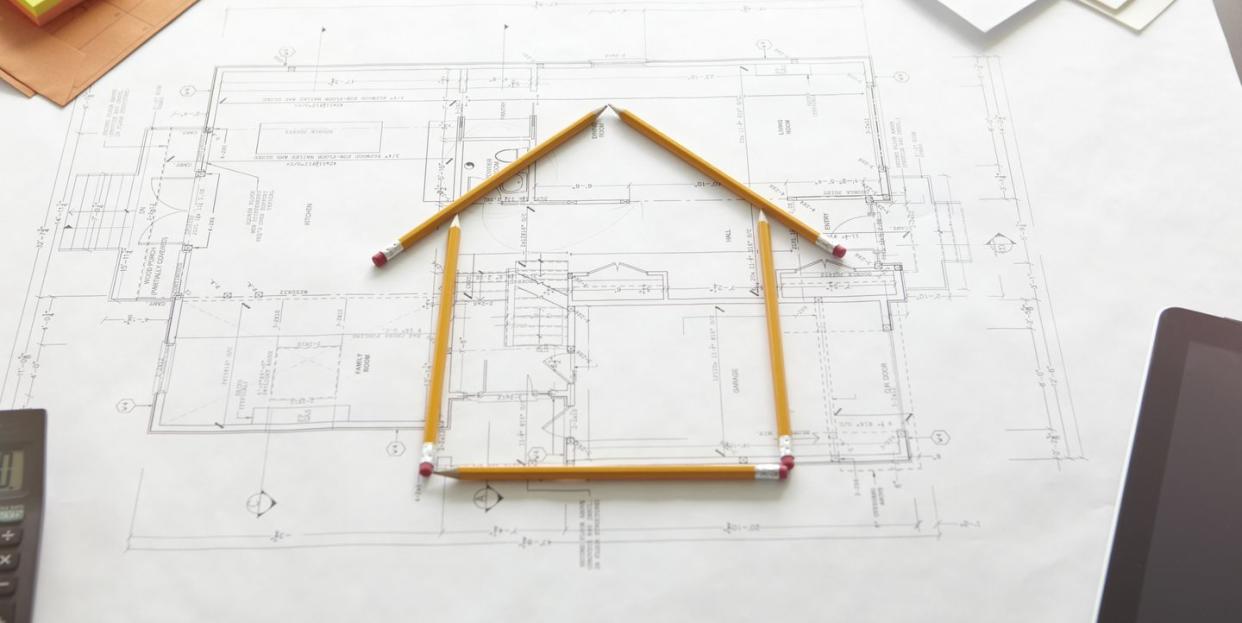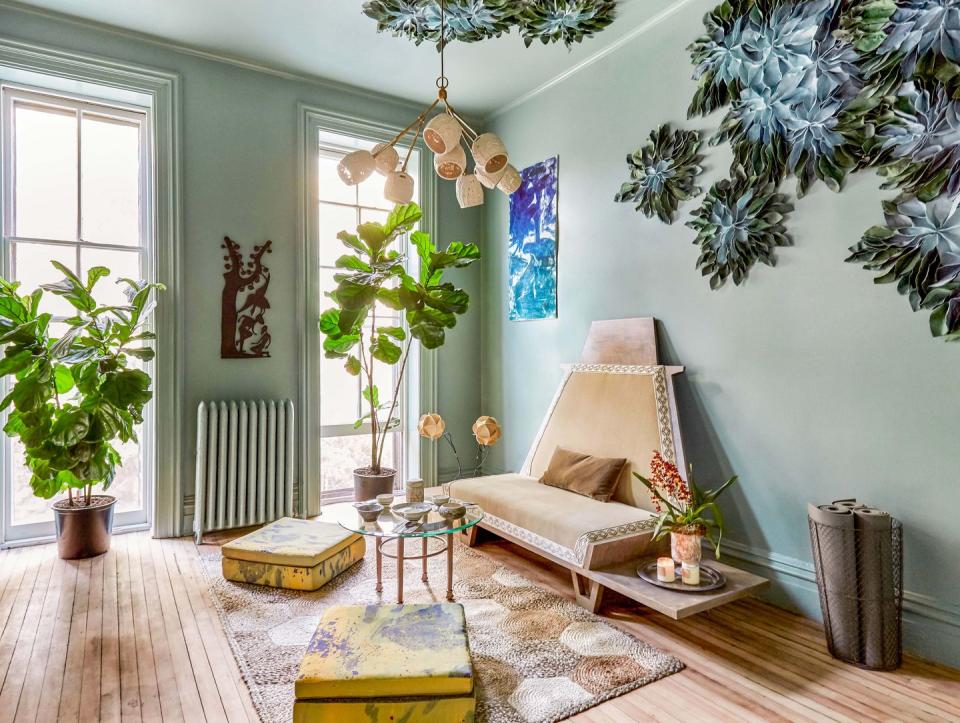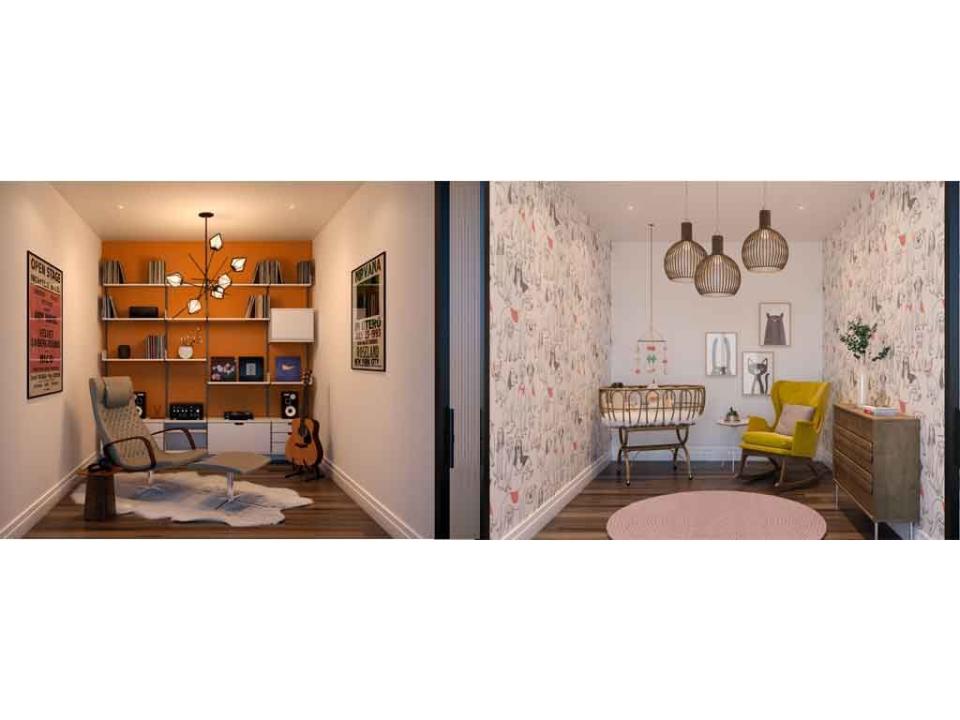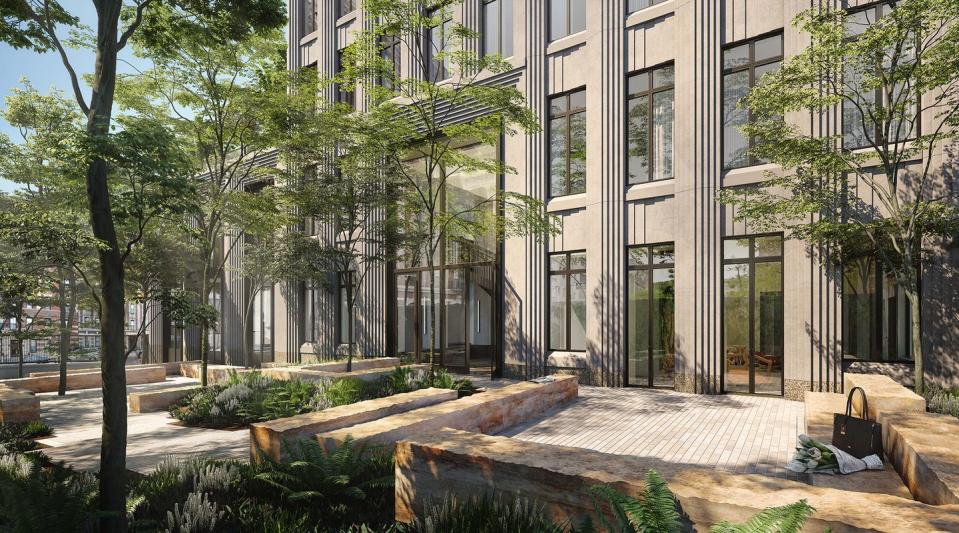Here's How the Coronavirus Pandemic Will Shape the Future of Design

As I write this, I'm embarking on week 10 of working—and eating, exercising, socializing, and everything else—from home, and, whether you're on week 8 or week 12, chances are you're in a similar boat. As the coronavirus has spread across the globe, it has, quite literally, pushed us all into our homes, making for an unprecedented relationship with our surroundings that will no doubt shape the future of design for good.
Over the past few months, there have been countless jokes about the new functions required of our homes. I, for one, particularly enjoyed a certain cartoon that reimagined a wine tasting tour, substituting "bedroom," "kitchen," and "dining room" for vineyards. In the design world, many a joke has been cracked about this being the change that could finally take down America's obsession with the open floor plan—a fallout which, I can't lie, I'd be happy to see. But the truth is, this pandemic, a global phenomenon the likes of which the world has truly never experienced, will have repercussions in design that go much deeper than better home office setups and a renewed appreciation for separate rooms.

First, and perhaps most instinctual, is an increased understanding of the home as a safe space. Any threat or uncertainty leaves us as humans longing for security, and in this instance, we've been pushed more than ever to find that in our homes. "Our homes are our sanctuaries more than ever before," says Maryline Damour of Damour Drake. Damour is one of several designers who has seen a real push towards prioritizing physical and mental well-being in home design well before the pandemic began—and she points out that this has only become a more important consideration now.
Adam Rolston, partner at INC Architecture & Design, agrees—and points to a more macro representation of wellness: Sustainability. "There are a lot of things happening in our world already like around health and wellness which I think are going to become even more important now," Rolston says.
"What's good for the planet is good for the human, so they’re inextricably tied, and in that way, we feel like wellness can be a gateway to broadening the scope of what it means to be sustainable and to support the health of the planet," he adds.
That's something Mitchell Gold + Bob Williams CEO Allison O'Connor sees as a silver lining. "Those principles of creating a healthy, environmentally-conscious home are really important," she says. "And I think coming out of this, companies that speak to that in an authentic way will be strong."
As for what we can expect in terms of style, O'Connor says that swatches being shipped from MGBW's North Carolina factory tell a pair of distinct stories: "Some folks have been really bold with their choices of fabric, and then we're seeing people on the polar opposite creating this very serene, warm, neutral, safe space," she explains.
Designers seem to agree that this divide speaks to people spending more time in their homes—and being more in tune with what they want there. Quite simply, says Tina Ramchandani, "your style is going to continue to be your style."
The most impactful changes, then, will likely come in terms of functionality, with the possibility of increased time at home making flexible spaces far more appealing. "It's very easy for someone, especially in a small condo or apartment, to say, 'You know what, fine, I'm going to work from my kitchen island,'" says architect and developer Peter Darmos of Astéras Properties. "But then you're also having dinner on that same space, and you feel like you're just in this sort of rut. I think when you blend work in in the personal life too much, it may not be a good thing."
While it's tempting to try to simplify that into an easy "home offices are in, open floor plans are out" mantra, the reality is that the very uncertainty of these times means the boundaries aren't so set in stone. Nancy J. Ruddy of architecture and design firm CetraRuddy has seen increased demand in "flex spaces" that can be customized for different needs (besides home offices or school spaces, this may also mean rooms for aging parents, who choose options other than nursing homes post-pandemic). In smaller apartments that can't necessarily contain a built-in office or home-schooling station, Rolston predicts that clients will be looking for larger bedrooms, which can function as offices in a pinch.

"The American home must function as it has never before," says Studio Sofield founder William Sofield. "Gracious and thoughtful plans, quality of craft—"more on that in a moment—"and multifunctional spaces are the harbingers of a new era in design."
This multifunctionality will likely extend to outdoor spaces, too. "In the past few years there has been a big movement towards semi-private exterior spaces," Rolston says. While this has mostly applied to newer apartment buildings in big cities, they may become a more widespread norm. "I think that people are going to be looking for more of those amenity spaces because they allow you to socialize with a more controlled group," says Rolston.

That said, the separation between indoors and out is more important than ever, and designers predict that psychology will have a serious impact on design.
"Our clients are already asking for mudrooms with a bathroom, shower, and washer/dryer" to allow for a complete desensitization upon entering the house, says designer Nicole Fuller. Chicago-based Katie Wozniak agrees, citing "back entrances" as a design element that will grow moving forward.
But these spaces are about more than just an amended footprint. Indeed, the concept of a distinct barrier between outside and inside may fundamentally change the way we approach entering our—and other people's—homes. "That process may become part of some new, beautiful ritual we have," says Rolston.
This idea touches on something that connects every prediction designers are making: an increased thoughtfulness in design, be it in the way we move through and use a space, the way we protect it, or the things we put in it. Several people I spoke to cited this, coupled with rough economic times, as an impetus to support more small, local businesses. Similarly, the pause on project timing may allow more patience for hand-crafted elements that take longer to produce. After all, if you're going to be stuck in your home, you might as well be surrounded by things that have meaning, things that you love, and things that will stand the test of time, both in durability and style.
As renowned trend forecaster Lidewij "Li" Edelkoort said on the Business of Fashion podcast last week, "the virus is making us do already the things we for a long time knew we had to do." So, as we look forward from this time of great uncertainty, let's find hope in the possibility of starting anew with a rekindled appreciation for wellness, one that's exemplified in our own health as well as that of our families, the planet, and those responsible for making the things that fill our homes.
"I think it's a critical time to be a designer—we're going to help make the physical world an easier and a better place to be,” says Rolston. “In a way, when this is over, designers will be the front line workers of the rebuilding.”
Follow House Beautiful on Instagram.
You Might Also Like

